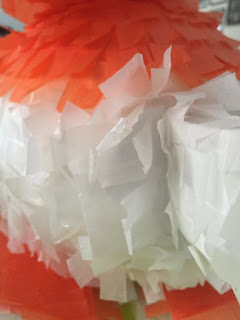Inspired by "Star Wars", I decided to give new life to an old throw pillow by making a Yoda cover for it. It turned out great, and now my son has a special pillow to use in his bed in our travel trailer.
This was a fun and easy project that kids could help with and would be perfect as a gift for a "Star Wars" fan or as an addition to a "Star Wars" themed bedroom or home theater.
SUPPLIES:
- pillow form or old throw pillow
- solid green fabric - any kind you like, large enough to cover the pillow plus ears and seam allowance (I used fleece)
- thread matching your fabric
- marker
- sewing notions, sewing machine, etc.
- Yoda photo or toy for reference
1. Lay out the fabric, double-layered and right-sides-together. Place your pillow on top. Draw a line on the fabric around the pillow approximately 1 inch from the sides of the pillow. Draw ears. (You can make a paper template if you want them to be perfectly even.)
Remove pillow. Pin fabric layers together. Sew around on the lines BUT NOT BETWEEN THE PILLOW AND THE EARS. Leave an opening at the bottom edge for turning and inserting pillow.
2. Trim the excess fabric and turn right side out.
3. Sew around inside the ears and between the ears and where the pillow will go.
If you really want to get creative, you could embroider Yoda's facial features on the pillow or draw them on with fabric markers. You could also write one of Yoda's quotes on the pillow, such as "Do or do not. There is no try."
4. Insert the pillow and sew the opening shut. DONE.


























